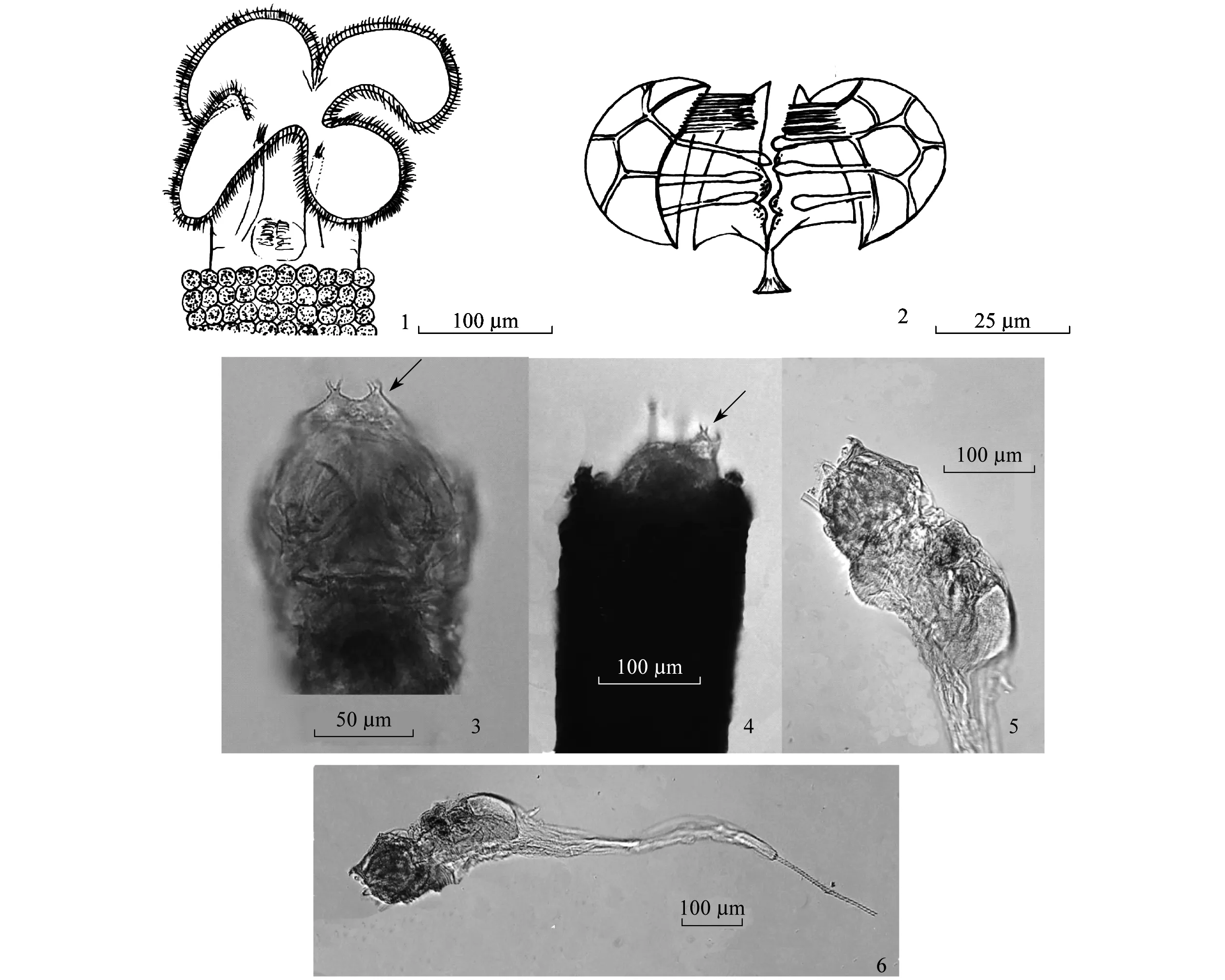New record of Floscularia bifida (Rotifera) from China
2014-03-20WUDandanLUOYongtingWUBoWANGQuanxi
WU Dandan,LUO Yongting,WU Bo,WANG Quanxi
(College of Life and Environmental Sciences,Shanghai Normal University,Shanghai 200234,China)
1 Introduction
The Humble Administrator Garden of Suzhou is a famous park with long history. No report on the freshwater zooplankton of the park has been available. In order to remedy this,we made a sampling trip to the park in September 2010. Special attention was firstly focused on this kind of freshwater in a traditional private garden.
China rotifers have received relatively little attention,especially for illoricate sessile rotifers[1-2]. Little is known about this group. Segers concluded the genusFlosculariaCuvier,1798 contained eight valid morphospecies all over the world in 2007[3]. Another species,F.wallaceiSegers&Shiel 2008 was added into the group[4]. Most of them have been described from the northern hemisphere,but subsequently been recorded from many regions all over the world. In this paper we report firstly on the species,FlosculariabifidaSegers,1997 that occurred in a pond of The Humble Administrator Garden,Suzhou City,Jiangsu province,China. Until recently,little information ofF.bifidawas known since it was first recorded in Brazil[5]. It seemed endemic to that area. The new record raises intriguing questions about possible dispersal and biogeographical distribution of rotifers.
2 Material and methods
We collected living specimens from submerged macrophytes with water from the ponds. Then we took back the samples in icy box immediately to lab of Shanghai Normal University. Animals were observed under a compound microscope,and waited the living animals extending completely then took photographs using a compound microscope (Nikon ECLIPSE50i). After observing detail of living animals,materials were preserved in 4% formalin. Animals were shucked the tube under a dissecting microscope (OLYMPUS SZX9) and took more photographs. Trophi were isolated by dissolving tissues using NaOC1. Drawings were made using a camera lucida.
3 Results
Living adult animals are inhabiting in the structure of the tube which attached to macrophytes ,corona with 4 lobes (fig.1-1). Tube pellets are round,brownish and densely packed (fig.1-1,1-4),which gives protection to the animals. The animal will contract into the tube when it gets attacks. Adults have a long foot peduncle (fig.1-6),which shares withF.pedunculata(Joliet,1883) andF.wallacei. It belongs to theF.ringensgroup in the genus.F.bifidahas a pair of bifid mucrons on the dorsal projection (fig.1-3,1-4),which is the key feature different from other congeners.

1.Anterior part:corona with 4 lobes and tube with pellets;2.Trophus;3.Head dorsal;4.Head with tube lateral;5.Lateral;6.Habitus Figure 1 Morphology of Floscularia bifida Segers 1997
Trophus belongs to malleoramate type (fig.1-2),weakly asymmetrical; Many unci teeth situate complete shaft length; strong differentiation in a proximl group of large,and a distal group of weak teeth. Proximal group consisting of three subequal robust teeth ,with weakly developed proximal,and robust second and third tooth.
Measurement:Total length 900-1009 μm(n=10).
Ecology:The Humble Administrator's Garden is located at longitude 120.625 °,latitude 32.326 °. The pH value of the sampling sites is 6.5-8.5,and the temperature of water is 5-28 ℃.
4 Discussion
Identification of Flosculariidae relies mostly on the shape of the corona,since they are circular/bean-shaped inPtygura,heartshaped inSinantherina,or having evolved into a corona provided with a number of lobes asF.bifida. Numbers of lobes are important features to digonosis genus:four inFlosculariaCuvier,eight in the monotypicOctotrochaThorpe[6]. Only 1 speciesFlosculariaringens(Linnaeus,1758) in the genus was recorded in China[1-2].Due to the poor information on sessile rotifers in china,more attentions are called for on this group.
Acknowledgement Great appreciation to Dr. H. Segers from Royal Belgian Institute for Natural Sciences ,who accompanied with us to sample by himself in the ponds,and demonstrate the scientific sampling,identifying to rotifers.
:
[1] WANG J J.Fauna of Freshwater Rotifera of China[M]. Beijing:Science press of China,1961.
[2] ZHUGE Y X, HUANG F,KOSTE W.Rotifera recorded from China,1893-1997,with remarks on their composition and distribution[J].Internat Rev Hydrobiol, 1998,83(3):217-232.
[3] SEGERS H. Annotated checklist of the rotifers (Phylum Rotifera),with notes on nomenclature,taxonomy and distribution [J]. Zootaxa,2007,1564:1-104.
[4] SEGERS H,SHIEL R J.Diversity of cryptic Metazoa in Australian freshwaters:a new genus and two new species of sessile rotifer (Rotifera,Monogononta,Gnesiotrocha,Flosculariidae) [J]. Zootaxa,2008,1750:19-31.
[5] SEGERS H.Contribution to a revision ofFlosculariaCuvier,1798 (Rotifera:Monogononta):notes on some Neotropical taxa[J]. Hydrobiologia,1997,354:165-175.
[6] KOSTE W R.DieRädertiereMitteleuropas. Gebr. Borntraeger,Berlin,Stuttgart[M]. Druck:Graphik+Druck München,1978.
